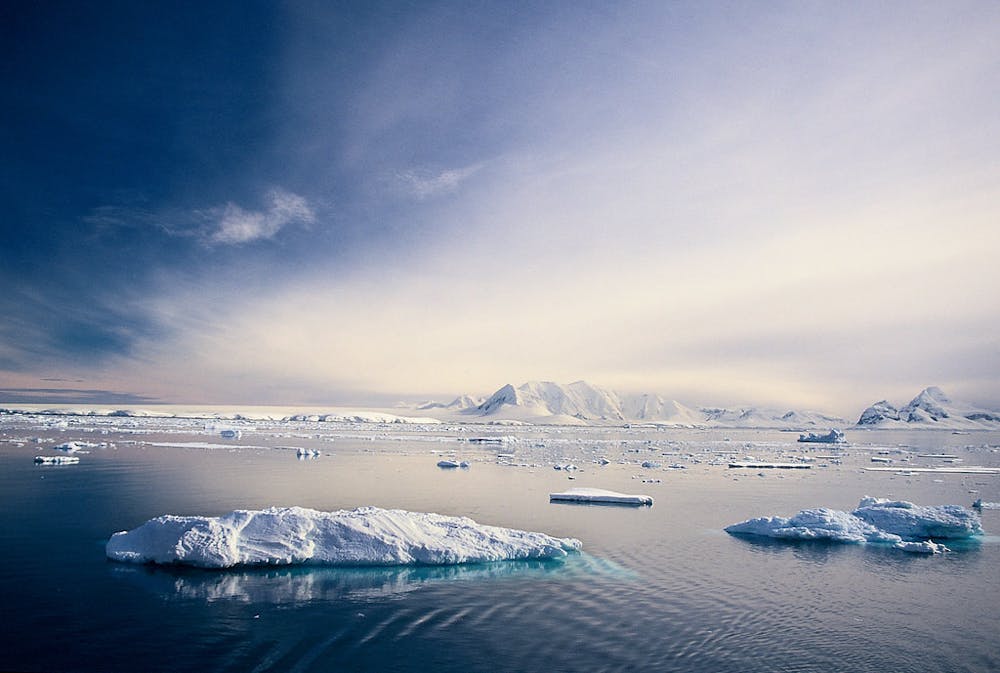It’s spooky season, and the following scientific findings sure are a treat! Scientific news this week ranges from as microscopic as gut microbiome to as macroscopic as Mars.
Melting of critical ice sheets in the West Antarctic may become an inevitable result of climate change
A new model shows that the West Antarctic Ice Sheet will melt in the coming centuries, and human efforts will not have a substantive enough effect to stop its melting. The sheet contains an amount of ice that could raise the sea level by 5.3 meters.
The model aims to determine how much melting is unavoidable and to what extent the global community has control over it. It simulates five scenarios based on different degrees of natural and anthropogenic forces on the temperature of the ocean. The temperature increase and the consequent amount of melting were greater in scenarios with greater natural and human-generated forces.
The study shows that human efforts such as the reduction of greenhouse gas emissions have limited power to alleviate the trend of sea level rise substantially. The effect on the ice sheet is irreversible, and the researchers agreed that there must be legislative action to adapt and prepare for the unavoidable sea level rise. For example, coastal communities will need to relocate because coastal areas will become submerged and uninhabitable as a result of sea level rise.
Abnormal gut fungal microbiome found in people with severe COVID-19
The gut microbiome, which refers to the microorganisms such as bacteria and fungi in the gastrointestinal tract, is known to interact with many systems in our body including the digestive system, the immune system and the central nervous system. A recent discovery elucidates the impact of the gut fungal microbiome on immune response in severe COVID-19 cases, adding to existing evidence of the gut microbiome’s important role in human health.
Inflammation is suggested as the mechanism behind the symptoms of severe cases of COVID-19. Patients infected with COVID-19 also show signs of altered and weakened gut microbiome. Researchers at Weill Cornell Medicine wanted to examine whether there was an association between gut microbial dysbiosis and inflammation as an immune response.
The team collected blood samples from both COVID-19 patients and healthy individuals. Through comparison, they discovered that the blood from people infected with COVID-19 showed more antibodies for several fungal species, which indicates an increased presence of those fungal species in the patients.
In particular, a fungus called Candida albicans is known to be relevant to immune cells that can cause inflammation in the lungs. Therefore, its presence in the gut microbiome could contribute to the inflammation caused by COVID-19, though future studies are necessary to further confirm this. The results suggest the possibility of prescribing existing antifungal treatments to COVID-19 patients, which could help address microbial dysbiosis and alleviate inflammation.
A molten rock layer surrounds the liquid-metal Martian core
Although NASA’s InSight Mars lander has retired, its hard work in recording seismic waves on Mars between 2018 and 2022 has proven fruitful in a recent endeavor that proved the Martian core smaller than previously expected.
A meteorite, which collided with Mars opposite where the InSight lander was situated in September of 2021, is important to this finding as it allowed InSight to record seismic activity through the Martian core.
Similar to how seismic waves from earthquakes are used to study the Earth’s layers, the InSight lander facilitated the investigation of Mars’ layers through “marsquakes.” Findings on a planet’s layers can provide insight into its geological development and indicate whether its environment was ever suitable for life.
The researchers found that the previously identified boundary between the liquid core and the solid mantle was actually where the newly discovered molten rock encountered the solid mantle. Therefore, the actual radius of the liquid-metal Martian core is smaller than previous calculations indicated. This liquid-liquid boundary between the molten rock and liquid core is unique to Mars.
Domestic cats engage in social interactions through facial signaling
Cats are traditionally considered a more independent and solitary species than dogs. However, a recent study documented facial expressions in domestic cats that suggest more complicated social interactions than previously thought.
Previous studies focused on non-affiliative interactions and aggressive and defensive behaviors such as growling and stiffening. It was assumed that communication by facial expression was mainly involved in aggressive behaviors. However, in addition to non-affiliative behaviors, this group of researchers also incorporated affiliative behaviors that are crucial to social bonding, such as grooming or rubbing on another cat.
The researchers observed cats at a cat cafe in Los Angeles. They used a Cat Facial Action Coding System that allowed the documentation of the number and types of facial muscle movements in facial signaling and the creation of a repertoire of facial expressions in domestic cats.
The findings agreed with previous research on the presence of diverse facial expressions in non-affiliative interactions, such as moving whiskers away from other cats in an unfriendly confrontation. The study also unraveled the variety and importance of facial expressions in affiliative interactions in household cats.
The researchers think that the non-affiliative behaviors of household cats might have been inherited from wildcats who engage in these behaviors in territorial disputes. On the other hand, facial signaling in affiliative behaviors might have evolved and diversified in household cats as a result of domestication.





